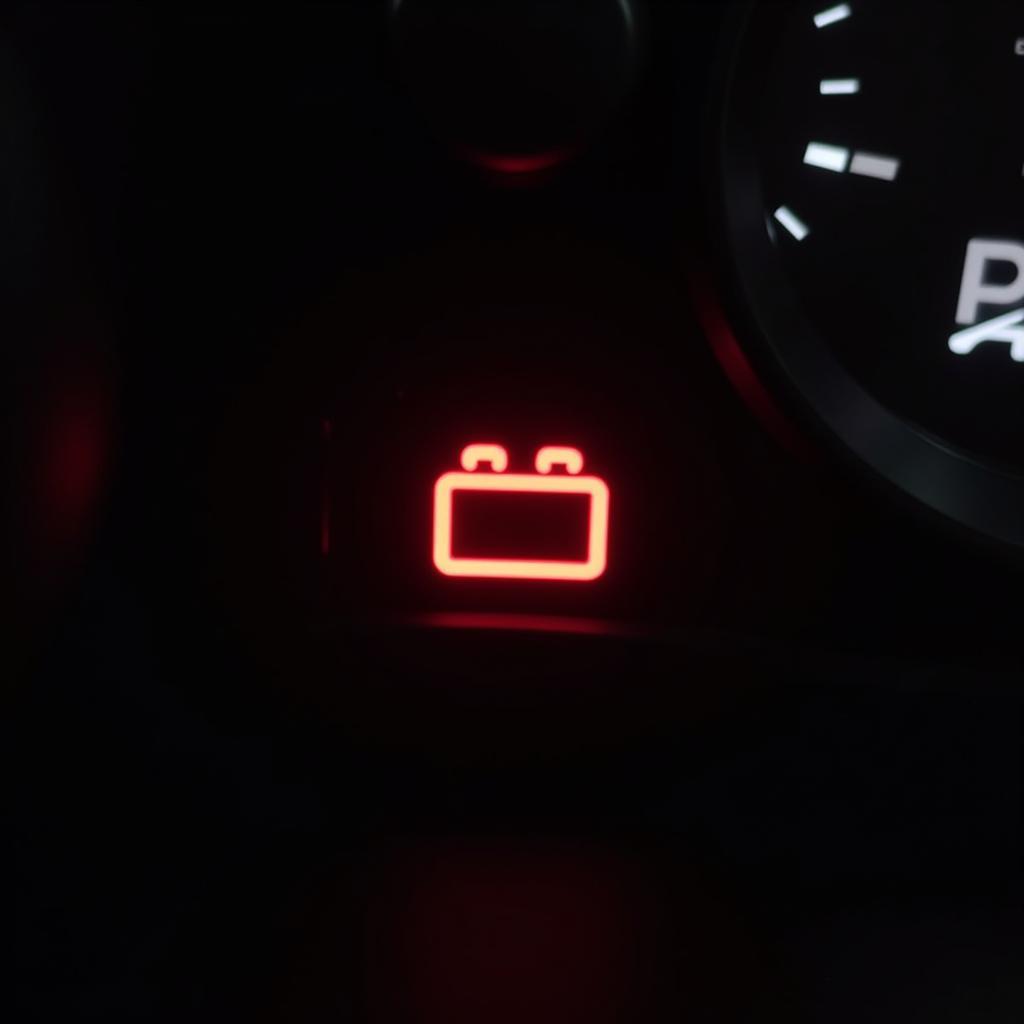A completely dead car battery is a frustrating experience, leaving you stranded and unable to start your vehicle. This article provides a comprehensive guide to understanding why your battery might be completely dead, how to diagnose the problem, and potential solutions, including remote software fixes when applicable. car battery completely dead can happen for a variety of reasons. Let’s delve into the details.
Why is My Car Battery Completely Dead?
Several factors can contribute to a dead car battery. Understanding these can help you pinpoint the cause and prevent future occurrences. Some common culprits include:
- Leaving lights or accessories on: Accidentally leaving headlights, interior lights, or the radio on can drain the battery, especially older ones.
- Extreme temperatures: Both extreme heat and cold can negatively impact battery performance and lifespan.
- Old age: Car batteries have a limited lifespan, typically 3-5 years. As they age, their ability to hold a charge diminishes.
- Corrosion: Battery terminals can corrode over time, hindering the flow of electricity.
- Parasitic drain: Even when the car is off, certain systems can draw small amounts of power, eventually leading to a dead battery. This could be a faulty component, such as a glove compartment light staying on, or a clock drawing more power than it should.
- Alternator issues: A malfunctioning alternator won’t recharge the battery while the engine is running, resulting in a dead battery.
- Short circuits: A short circuit in the electrical system can rapidly drain the battery.
 Jump Starting a Dead Car Battery
Jump Starting a Dead Car Battery
How to Diagnose a Completely Dead Car Battery?
is my car battery completely dead is a common question among drivers. Here are some simple steps to check if your car battery is truly dead:
- Try the headlights: If the headlights are dim or don’t turn on at all, it’s a strong indicator of a dead battery.
- Listen for clicking sounds: When you turn the key, a rapid clicking sound usually means the battery has enough power to engage the starter solenoid but not enough to crank the engine.
- Check the dashboard lights: Dim or flickering dashboard lights can also signify a weak or dead battery.
- Test the battery with a multimeter: A multimeter can accurately measure the battery’s voltage, confirming its state of charge. A reading of 12.6 volts or higher indicates a fully charged battery. A reading significantly lower than 12 volts suggests a dead battery.
Solutions for a Completely Dead Battery
Dealing with a car battery not completely dead but still weak might require a simple recharge. However, a completely dead battery often requires more attention. Here are some options:
- Jump-starting: Using jumper cables and another vehicle’s battery can provide the necessary power to start your car.
- Battery charging: A battery charger can restore a completely dead battery to full charge, although this process takes time. charge completely dead battery with a dedicated charger will often be more effective than jump-starting and leaving the engine to recharge the battery.
- Battery replacement: If the battery is old or severely damaged, replacement is the most reliable solution.
“Regularly checking your battery’s health is crucial. Early detection of potential issues can save you the hassle and expense of a completely dead battery.” – John Smith, Automotive Electrical Engineer at CarDiagTech.
Will a Battery Charger Charge a Completely Dead Battery?
will a battery charger charge a completely dead battery depends on several factors, such as the type of charger and the condition of the battery. Modern “smart” chargers often have desulfation modes that can revive deeply discharged batteries. However, a severely damaged or very old battery might be beyond recovery, even with a specialized charger.
Can Remote Diagnostics Help with a Dead Battery?
In some modern vehicles, remote diagnostics and software updates can address certain battery-related issues. For example, a software glitch affecting the battery management system could potentially drain the battery. A remote software update could rectify this problem. However, physical issues like a corroded terminal or a faulty alternator would still require hands-on repair.
“While remote diagnostics are increasingly powerful, they can’t fix everything. Physical damage or wear and tear still require traditional repair methods.” – Jane Doe, Lead Diagnostic Technician at CARDIAGTECH.
Conclusion
A completely dead battery can be inconvenient, but understanding the potential causes and solutions can help you address the issue effectively. Regular maintenance, including battery testing and cleaning the terminals, can prevent future problems. If you suspect a more complex electrical issue or need remote diagnostic assistance, consult a qualified automotive technician.
FAQ
- How long does it take to charge a completely dead battery? It can take anywhere from a few hours to a full day, depending on the battery’s condition and the charger’s capacity.
- Can I jump-start my car with a completely dead battery? Yes, but it might require multiple attempts or a more powerful booster battery.
- How often should I replace my car battery? Typically, car batteries need replacement every 3-5 years.
- What are the signs of a dying car battery? Dim headlights, clicking sounds when starting, slow engine cranking, and electrical issues are common signs.
- How can I prevent my car battery from dying? Avoid leaving accessories on, ensure the alternator is functioning correctly, and park in a garage during extreme temperatures.
- Can extreme cold kill a car battery? Yes, extreme cold can significantly reduce battery performance and even cause it to freeze, leading to damage.
- What is a parasitic drain on a car battery? It’s a small but constant drain of power from the battery even when the car is off, potentially caused by faulty electrical components.

